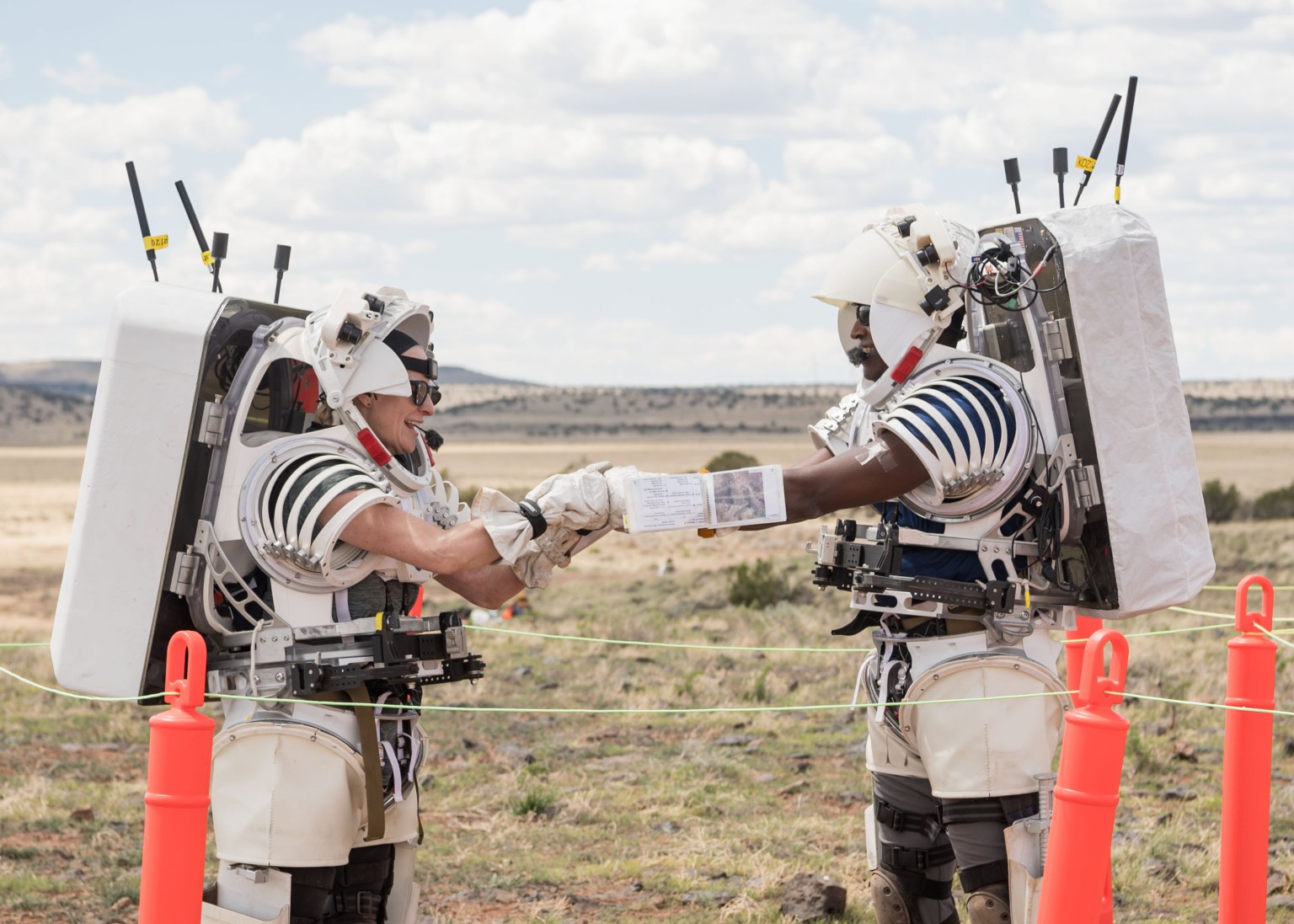
NASA/Josh Valcarcel
NASA astronauts Kate Rubins and Andre Douglas recently performed four moonwalk simulations to help NASA prepare for its Artemis III mission. Due to launch in September 2026, Artemis III will land two, yet-to-be-selected, astronauts at the Moon's South Pole for the first time.
Traveling to space requires immense preparation, not just for the astronauts, but for the hundreds of people who work in the background. That's why Earth-based simulations are key. They allow spacesuit and tool designers to see their designs in action. Flight controllers who monitor spacecraft systems and the crew's activities get to practice catching early signs of technical issues or threats to astronaut safety. And scientists use simulations to practice making geologic observations from afar through descriptions from astronauts.
Between May 13 and May 22, 2024, Rubins and Douglas trudged through northern Arizona's San Francisco Volcanic Field, a geologically Moon-like destination shaped by millions of years of volcanic eruptions. There, they made observations of the soil and rocks around them and collected samples. After the moonwalks, the astronauts tested technology that could be used on Artemis missions, including a heads-up display that uses augmented reality to help with navigation, and lighting beacons that could help guide a crew back to a lunar lander.
Dozens of engineers and scientists came along with Rubins and Douglas. Some were in the field alongside the crew. Others joined remotely from a mock mission control center at NASA's Johnson Space Center in Houston in a more realistic imitation of what it'll take to work with a crew that's some 240,000 miles away on the lunar surface.
Here's a look behind the scenes of a "moonwalk."






